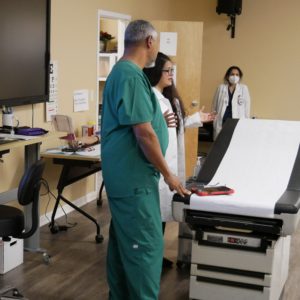Author: Dr. Alexey Podcheko MD, PhD, Professor of Pathology American University of Integrative Sciences
Pathology is the study of causes, mechanisms and the processes of diagnosing diseases. In my opinion, this is one of the most important courses you will take in the second year of medical school as the content of this subject is heavily tested on the board exams. From my personal anecdotal experience, nearly 60-70% of the questions on the USMLE STEP 1 and STEP 2 CK can easily be answered if you have a solid knowledge of this subject, and this subject only! Beyond my anecdotal experience, I gleaned additional confirmation to this fact a few months ago as I analyzed the score reports of 60+ students who passed or failed the CBSE (comp exam) on the first attempt.
The most obvious difference between those two cohorts (at minimum, a multiple of five) was in the ability to answer Pathology questions. To say it in simple words -most of these students failed the CBSE because they did not retain enough Pathology knowledge!
Pathology is a high-volume course that progresses and builds on complex concepts with a lot of information that requires knowledge of terminology and factoids (e.g. oncomarkers, oncogenes, mediators of inflammation, classifications of diseases, etc) There are a plethora of resources to study Pathology, but the best first step is to identify those resources which will provide you personally with the best “retain information/time spent” ratio.
For many of you the “spaced repetition” approach of Firecracker can significantly improve your Pathology scores. Research has shown that repeated testing and active recall of information using a spaced review system can help you learn 10 – 50 times faster than conventional methods. Now, allow me to provide some tips on how to use Firecracker and this spaced repetition approach while you are taking a Pathology course.
Remember that due to the volume of the material the course is divided in two parts: General and Organ System Based portions. Hence, Pathology is taught for two semesters. Should you wait until you complete a full course of Pathology to start using Firecracker? Definitely not! Start as soon as you are able to get access to Firecracker and set up your account. After logging in and getting ready to utilize Firecracker for first time, the most important thing to do is to align Firecracker question topics and cases with your Pathology Syllabus. Here, “to align” means that you need be wise when you are selecting topics for your daily reviews and setting level or importance (i.e. urgent, current) to the selected topics.
Below are my suggestions on how to do this for both parts of our Pathology course (General and System Organ).
You have most likely been using Firecracker for a while and have selected some topics for study. For the time being, it is better to unmark those topics in order not to get confused while you are concentrating on the Pathology material. To do that just select the left bar “Study something specific” then “Manage Marks” (see picture below) and change all marked topics to unmarked.
As the next step you will need to select specific Pathology topics for study. To save your time I have prepared a table (click here to download the table on your laptop) which will help you to align Pathology course material and Firecracker questions. How to use this table? Here are the steps:
Step 1: Download the table to your computer. In the left column of the table I placed topics of Pathology course. Find in that column the topic which was taught today.
Step 2: In the middle and right column find topics you need to select for self-study in the Firecracker.
Step 3: Open the Firecracker. Select “Study Something Specific” from the left bar of Firecracker main page. Use navigation through categories and subcategories of Subjects or just type in the search content of 3rd column of the table and select as “Urgent” topics you are studying now. Select as “Current” topics you have studied in this block. Select as “Past” topics from previous blocks.
For example, you are had covered in the class today apoptosis. According to the table I have prepared, you need to paste into search “Apoptosis” and select from multiple topics the following topic: Basic Sciences > Pathology > Responses to Injury >Apoptosis .
Mark “Basic Sciences > Pathology > Responses to Injury >Apoptosis” as urgent:
Proceed with selection of other topics from the same block as “Current”, for example mark “Organ Systems > Neurology > Pathology > Stroke” as “Current”:
Do the same for all other topics which you covered in the current block of classes.
Last couple of tips.
1. Please keep in mind that “Firecracker” has 2 types of questions “open-end” and MCQs. If you select “Review Questions” (see picture below) you will be reviewing mostly open end questions (aka flash cards), but if you select “Solve Cases” you will be able to review MCQs.
2. Please keep in mind that you need to keep updating your list of topics and levels of priority for topics on weekly basis or sometimes even more frequently!
Enjoy and I wish you success in your preparations for Step 1.



